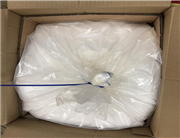English name
DEA-dodecylbenzenesulfonate
Numbering system
CAS RN: 26545-53-9
EINECS: 247-784-2
Molecular formula and molecular weight
Molecular formula: C22H41NO5S; C18H30O3S.C4H11N1O2;
Molecular weight: 431.63.
Structural formula
nature
Appearance (1), liquid.
Solubility: soluble in water.
Stability Stable.
Dangerous liquid form: irritation. It is moderately irritating to skin and eyes.
GHS (eighth revised edition) label:
Ecology may be harmful to the environment, and special attention should be paid to water bodies.
Biodegradability Degradable.
Features Excellent decontamination, foaming, emulsification, dispersion, wetting and solubilization properties.
Special matters (1) Can not be used in personal care products.
(2) Can not be used in nitrite environment. Diethanolamine reacts with nitrous acid to produce nitrosamines, which is a carcinogen.
Manufacturing method and process
The sulfonation reaction through continuous reactors (such as falling film reactors) is currently the most widely used method for preparing sulfonates.
Usually, dodecylbenzene and sulfur trioxide are sulfonated through a reactor and obtained by neutralization with diethanolamine.
In this process, raw materials such as sulfur trioxide and alkylbenzenes are reacted in a falling film reactor at a molar ratio of 1:1 at a temperature of 30-60°C.
Quality standards and inspection methods
(1) Physical and chemical indicators
project
Physical and chemical indicators
liquid
Active matter content, %, ≥
30.0
pH value (25℃, 1% aqueous solution)
7.0-10.5
Testing method
1. Active matter content
GB/T 5173 Surface active agents and detergents Determination of anionic active substances Direct two-phase titration method
ISO 2271 Surface active agents - Detergents - Determination of anionic-active matter by manual or mechanical direct two-phase titration procedure
2. pH
GB/T 6368 Surface active agent Determination of pH value of aqueous solution Potentiometric method
ISO 4316 Surface active agents - Determination of pH of aqueous solutions - Potentiometric method
(2) Indicators of hazardous substances
project
Hazardous substance index
liquid
Heavy metal (as lead), mg/Kg, ≤
20
Arsenic, mg/Kg, ≤
3
Testing method
1. Heavy metals (as lead)
Cosmetic safety technical specifications (2015 edition)
GB/T 30799 Test method for food detergents Determination of heavy metals
2. Arsenic
Cosmetic safety technical specifications (2015 edition)
GB/T 30797 Test Method for Food Detergents Determination of Total Arsenic
(3) Further explanation
1. Regarding the physical and chemical indicators: First, the carbon atom distribution should be indicated; again, the average molecular weight should be indicated.
Use and sample formula
(1) Typical use
Use as a detergent.
Used as emulsifier and dispersant.
(Two), industrial cleaning agent
Used as a detergent, etc.
(Three), emulsion polymerization
As an emulsifier, particle size control agent and other applications.






 China
China

